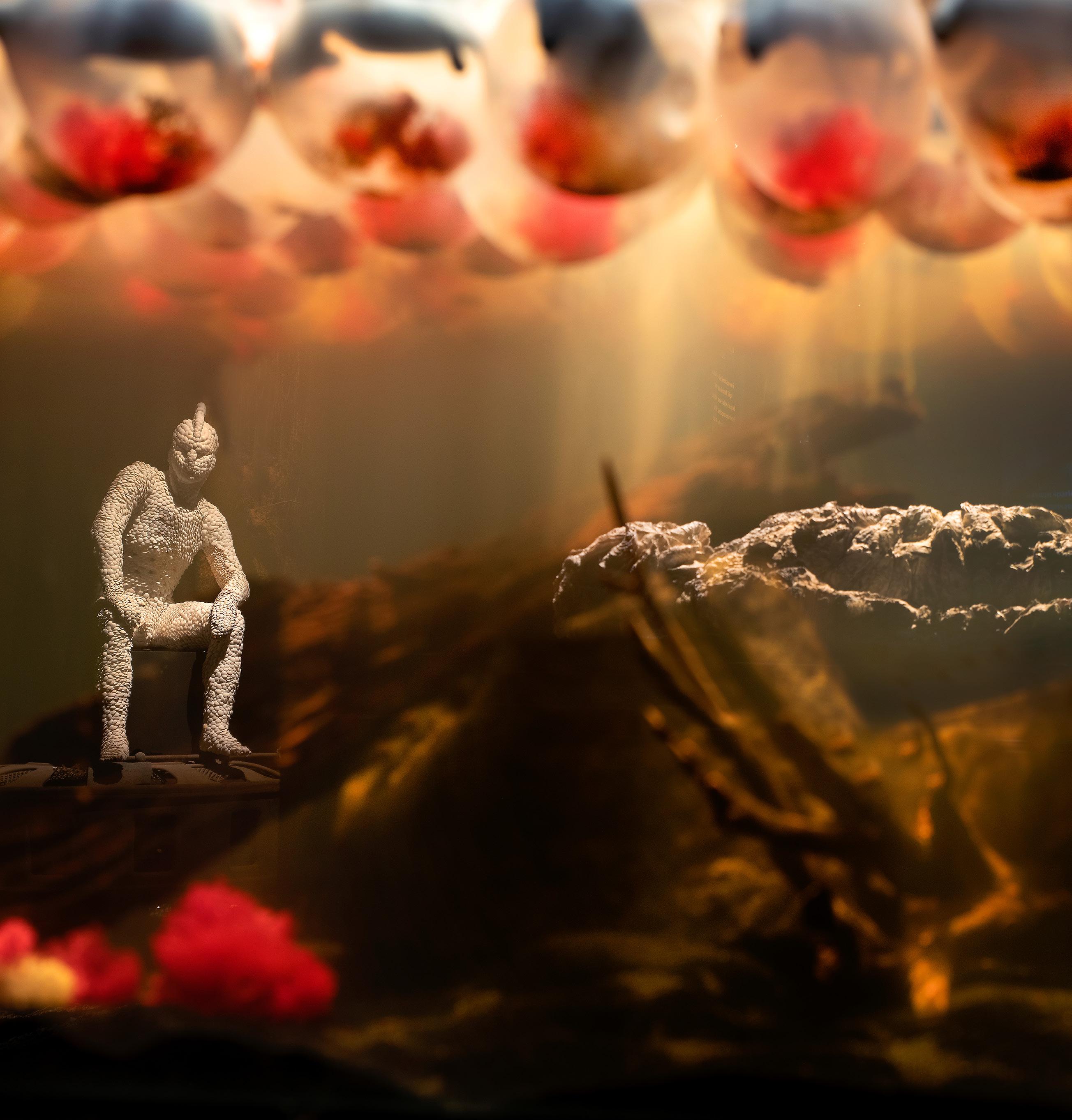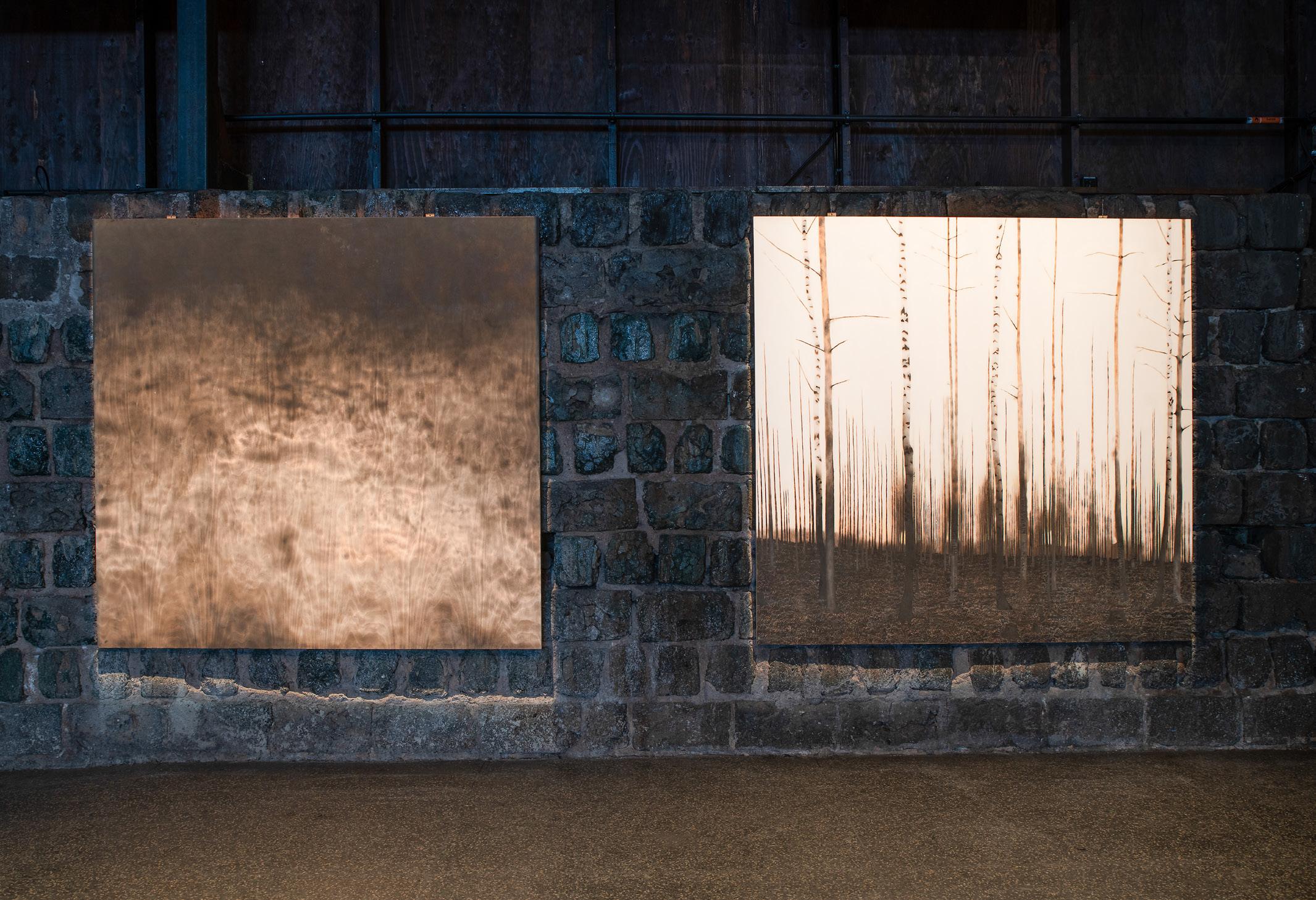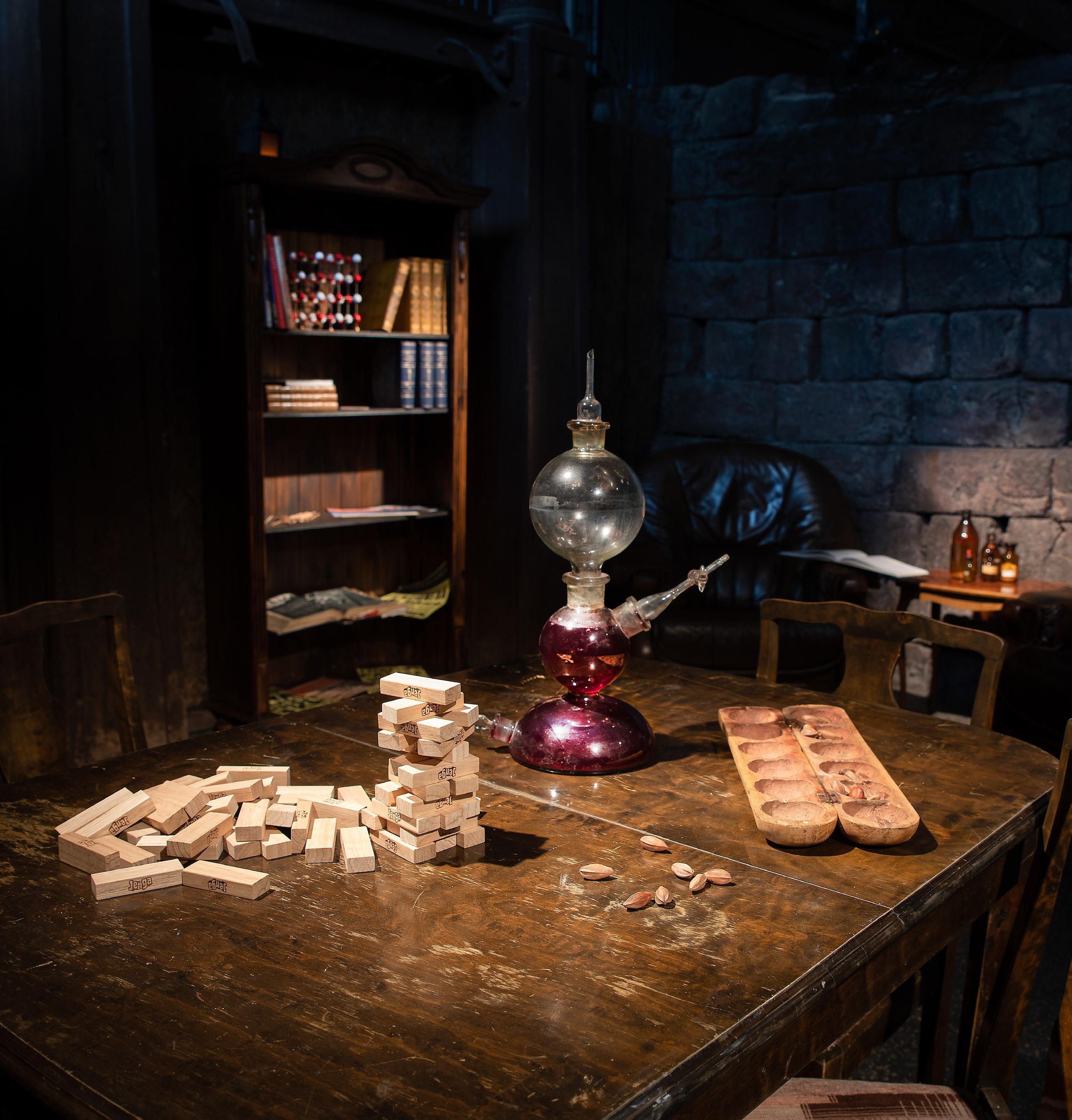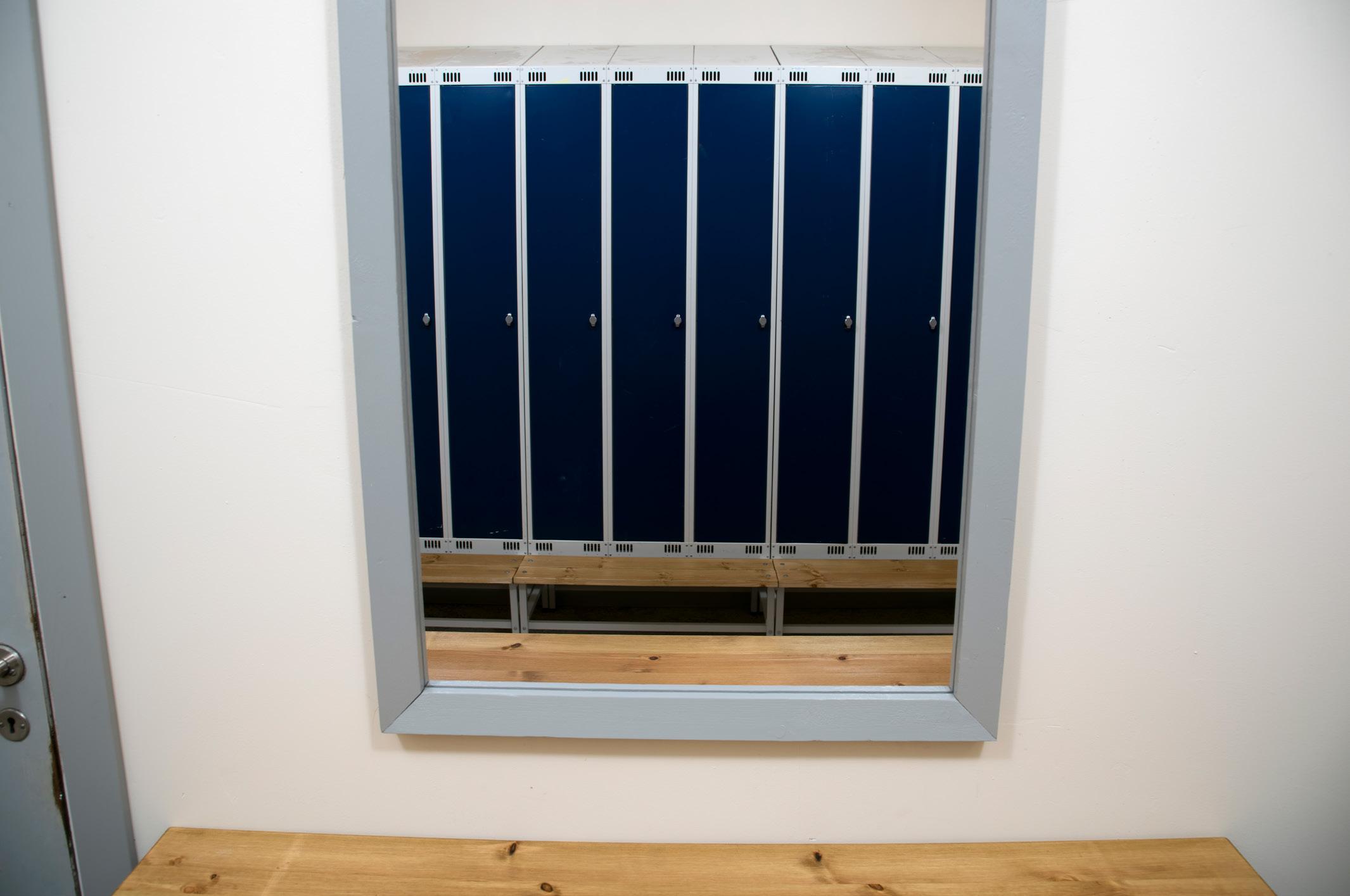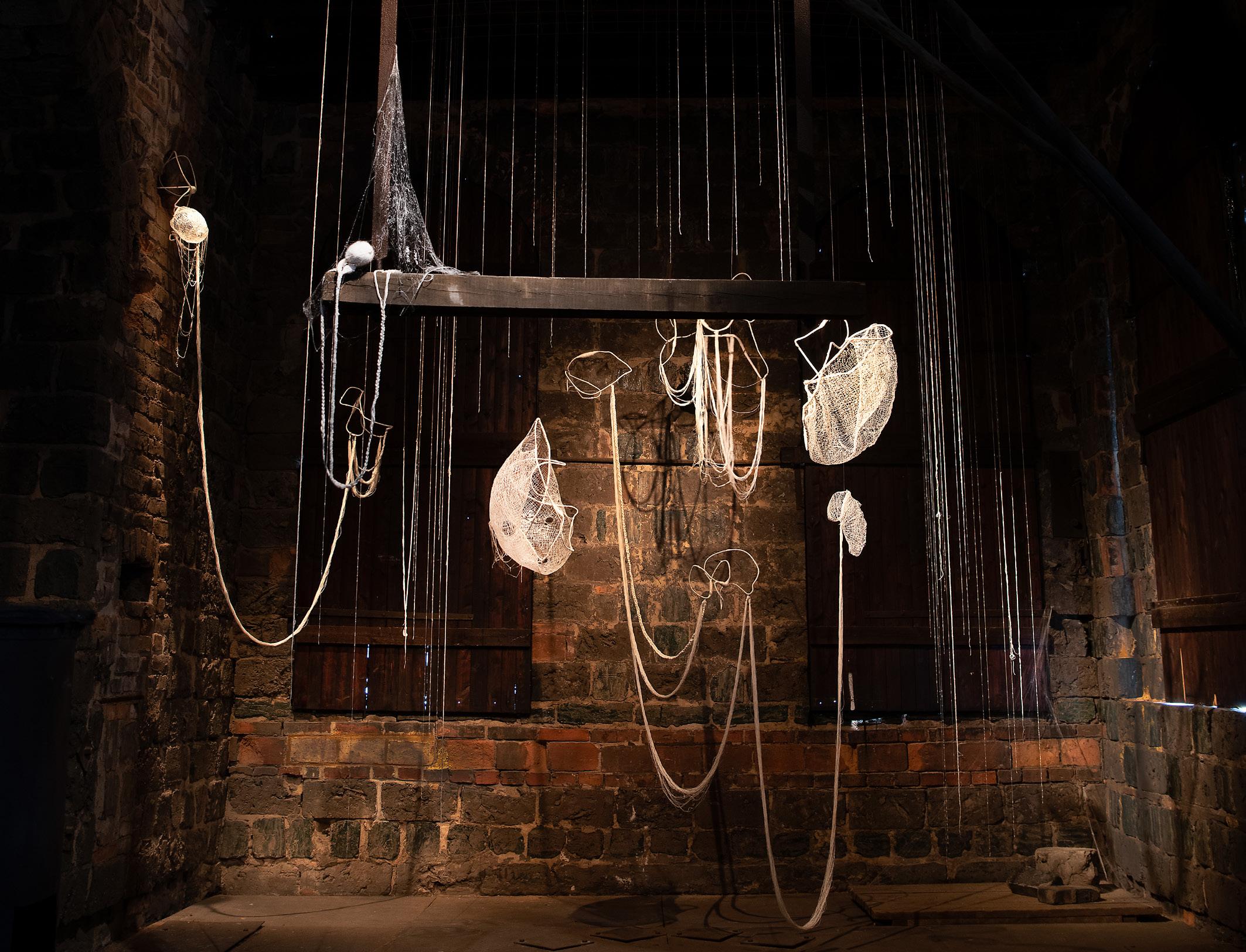
9 minute read
AQUANAUTS – Expedition to the Siljan Ring 1897
The old ironworks’ most formidable chamber – the seventy-metre-deep hall where the openhearth furnaces hissed and the rolling mills turned – opens this year for a shocking world premiere. For the first time ever, a hitherto unknown research expedition is presented, along with the researchers’ peculiar and remarkable findings.
In the 1890s, the people of the Western World stood at the crossroads between ancient agricultural societies and a new and modern highly industrialized and urban era. The interests of researchers ran in both directions. The possibilities of mass production begin to improve daily living conditions for many people. But the societal changes are great and in response to this, the writers and artists in Sweden are drawn in a romantic direction. Education for the masses – with the ideal of growth and good living conditions for the general population – strikes a nerve in public debate, with key figures such as Verner von Heidenstam, Gustaf Fröding, Selma Lagerlöf, Erik Axel Karlfeldt, Karin and Carl Larsson and Ellen Key setting the tone. In the Avesta ironworks, production pulses – the Works are still young and under development.
At this time, a research expedition embarks – quite unnoticed – to the Siljan Ring in Dalarna. The year is 1897 when two young scientists, Beata Gardelius and Inga-Lisa Blomgren, each specialized in a different field, head out to Skålberget, northeast of Rättvik. Beata is a palaeontologist and thus studies the remains of prehistoric life and how the organisms of ancient epochs evolved and interacted both with each other and with their contemporary environments. Inga-Lisa is a geologist and reads in rocks and soils how the landscape was formed and changed through millennia.
What happened to Beata and Inga-Lisa is shrouded in mystery. Through an anonymous shipment to the Museum of Ontology in Stockholm, their legacy has become known and is now being presented for the first time at Avesta Art. It was Olof Hedengren, curator of the museum, who received the suitcases and crates that proved to contain the women’s journals, a camera, rolls of film and other astounding finds dating to the inception of the Siljan Ring.
“Beata Gardelius and Inga-Lisa Blomgren’s findings refute all established research on human prehistory,” says Olof Hedengren. “Their discovery is related to the Siljan Ring, which was formed 377 million years ago when a celestial object five kilometres in diameter crashed into the Earth’s crust. The meteorite strike gave rise to new minerals and peculiar species of rock.”
“Homo aquatis, or Aquanauts, was the researchers’ astonishing discovery. This is a prehistoric human being whose existence no one has previously imagined or found traces of. Everything indicates that the dust around the meteorite combined with the planet’s water to form new organisms, and that from these, a new species of human evolved. The researchers’ portfolio, herbarium, photographs, films and authentic finds make the story clear and credible.”
In a rushing stream, the researchers found a cranium exhibiting both human features and the shape of a shell. In the depths of the forest, they saw a silvery creature move near the water in the moonlight. This was thus not an extinct species. Homo aquatis lived. Beata Gardelius and IngaLisa Blomgren were able to study their lives, and found a humanity borne by love and warmth. The individuals were at once both uninhibited and respectful. The circle was their symbol – round like the moon and the iris of the eye.
Avesta Art and Verket now exhibit both extraordinary real prehistoric objects and replicas of human beings and objects reproduced according to the researchers’ drawings. In the shadows of the ironworks glisten the body coverings of human relatives we could have never dreamt of. Here, we meet, in natural size, Testa ostreae with its oyster-glimmering skin, bark-clad Detractisque corticibus, Paleoris alba with its shimmering of pale mussels, the seemingly leaf-decked Nigrum folium, and Cochlea bruneis, attired as if wrapped in a sheath of seashells. They all belong to the family Homo aquatis. The wings of history do not stop with the ironmaking of the 1890s. They now bring us to the conception of the heavenly vault on Earth – and to Beata Gardelius and Inga-Lisa
Blomgren’s daring work in the swell of the Siljan Ring in 1897.
As stated, no one knows what happened to the two young researchers. Their journal tells us that they came to live closely with the Aquanauts. They marvelled at – and admired – their transboundary identity, collective care of fertilized eggs and communal rearing of all children. They themselves fell in love with each other.
The Aquanauts lived – and still live? – thanks to the interaction with the Siljan Ring’s unique geology. When industrialism wanted to exploit the minerals, the yelp of mining was set against homes that had existed since time immemorial. The last journal entry was written on 14 August 1897. The Aquanauts are about to flee – to try to find a sanctuary somewhere else – and Beata Gardelius and Inga-Lisa Blomgren have decided to follow them. “What will the afterlife hold? What will come to pass? Goodbye!” the entry reads. The words seem to have been written in haste.
The anonymous donation to the Museum of Ontology does not provide an answer to this riddle. Fossilized finds, artefacts, tracked scents, the aquarium containing spawn, and the researchers’ factual notes give us just a few clues. The film from the 1897 expedition to the Siljan Ring ends in a flood of water and light – like a sermon on paradise, the day humans understand that all life on our planet is connected.
Konstnärlig gestaltning
AQUANAUTS – Expeditionen till Siljansringen 1897 är gestaltad av en grupp konstnärer och andra yrkesutövare som med stor varsamhet har tagit sig an kvarlåtenskapen från forskarna Beata Gardelius och Inga-Lisa Blomgren. Arkeologiska lämningar, artefakter, teckningar, dagboksanteckningar, fotografier, filmer och insamlade doftspår är grunder för presentationen som ger inblick i en tidigare helt okänd förhistoria för mänskligheten. Även själva existensen av forskningsexpeditionen tystades ned i sin samtid – troligen därför att gruvbolaget som exploaterade mineralerna vid Siljansringen inte ville fläckas ned som marodörer.
Historiska fakta bekräftar nu att där fanns en kvardröjande koloni från en förhistorisk civilisation som år 1897 drevs på flykten. Eftersom aquanauternas liv är så starkt förknippat med de unika levnadsbetingelser som skapas i samspel mellan Siljansringens bergarter och flödande vatten, råder stor osäkerhet om de någon annanstans kunde finna en ny fristad. Den som har kunskaper i ämnet – eller själv har iakttagit dem – är välkommen att vända sig till Ontologiska Museet. Museet arbetar med inriktning på själva varandet – hur världen och tingen är beskaffade, och vilka deras väsensbetingande drag är.
Konstnärlig ledare för utställningen är Pompe Hedengren, utbildad vid Konstfack och sedan årtionden verksam inom bildskapande för svenska kulturinstitutioner. En allra första tolkning av Aquanauts gjordes sommaren 2018, i en föreställning i och över Stockholms Ström, under Stockholms Kulturfestival. Där medverkade konstsimmare, cirkusartister och kanotister i en totalupplevelse som under fem kvällar sågs av 100 000 människor. I Avesta Art och Verket visas nu den första fullödiga presentationen av Beata Gardelius och Inga-Lisa Blomgrens märkliga upptäckter.

AQUANAUTS – Expeditionen till Siljansringen 1897
Konstnärlig ledare och regissör, skulpturer, scenografier och historiska teckningar: Pompe Hedengren Historiska fotografier och filmer: Sara Mac Key Historiskt textmaterial: Olof Hedengren Intendent Paleontologiska Museet: Gertrud Ekman Öhrn Amanuens Geologiska Institutet: Carina Kraft Thomassen Historiska dofter: Karolina Stockhaus Historiska klädedräkter: Kicki Ilander Grafström Historiskt hår och mask: Sofia Lewandrowski Filmning av replikor och extramaterial: Carl Thorborg och Peter Hoelstad Aquatiska forskare: Anna Sommansson, Elin Mellqvist, Petter Hydén, Elric Sauze, Helga Stensson, Kaisa Fexe, Linda Sjöberg Thelenius, Jonas Beckman, Henrik Lundgren, Sara Strandlund och Maria Strandlund Berättarröst: Hedda Stiernstedt Klippning: Johan Björnsrud Dinoflagellater: Jonas Johansson Musik: Lasse Sander Ljud: Mats Blomberg. Redigeringssupport: Samuel Voigt Lind Tekniker: Hans Nilsson och Björn Olsson Ljussättning: Peter Abrahamsson



Artistic rendition
AQUANAUTS – Expeditionen till Siljansringen 1897 (AQUANAUTS – Expedition to the Siljan Ring 1897) is the work of a group of artists and other professionals who have, with great care, taken charge of the legacy of Beata Gardelius and Inga-Lisa Blomgren. Archaeological remains, artefacts, drawings, journal entries, photographs, films and collected scent tracks form the foundation of the presentation, which provides a glimpse into a previously unknown prehistory of humankind. Even the research expedition itself was silenced in its own time – likely because the mining company exploiting the minerals at the Siljan Ring did not want to be painted as marauders.
Historical facts now confirm that a lingering colony from a prehistoric civilization was driven out from the site in 1897. Because the Aquanauts’ lives are so strongly linked with the unique living conditions created in the interaction between the rocks and flowing waters of the Siljan Ring, it is highly uncertain whether they would have been able to find a new sanctuary elsewhere. Anyone with knowledge on this subject – or who has personally observed them – is urged to contact the Museum of Ontology. The museum works with a focus on the very nature of being – on what constitutes the world and things and what their essential attributes are.
The artistic director of the exhibition is Pompe Hedengren, who studied at the University of Arts, Crafts and Design and has been designing for Swedish cultural institutions for decades. The story of the Aquanauts was interpreted for one of the very first times in the summer of 2018, in a performance in and above the waters of Stockholms Ström during the Stockholm Culture Festival. Synchronized swimmers, circus artists and canoeists performed for five nights in a full-sensory experience viewed by 100,000 people. Beata Gardelius and Inga-Lisa Blomgren’s remarkable discoveries are now being presented in full for the first time at Avesta Art and Verket.
AQUANAUTS – Expeditionen till Siljansringen 1897
Artistic director and director, sculptures, sets and historical drawings: Pompe Hedengren Historical photographs and films: Sara Mac Key Historical text material: Olof Hedengren Curator, Museum of Palaeontology: Gertrud Ekman Öhrn Research Assistant, Geological Institute: Carina Kraft Thomassen Historical scents: Karolina Stockhaus Historical costumes: Kicki Ilander Grafström Historical hair and masks: Sofia Lewandrowski Filming of replicas and extra material: Carl Thorborg och Peter Hoelstad Aquatic researchers: Anna Sommansson, Elin Mellqvist, Petter Hydén, Elric Sauze, Helga Stensson, Kaisa Fexe, Linda Sjöberg Thelenius, Jonas Beckman, Henrik Lundgren, Sara Strandlund och Maria Strandlund Narrator: Hedda Stiernstedt Editing: Johan Björnsrud Dinoflagellates: Jonas Johansson Music: Lasse Sander Sound: Mats Blomberg. Editing support: Samuel Voigt Lind Technicians: Hans Nilsson och Björn Olsson Lighting: Peter Abrahamsson

